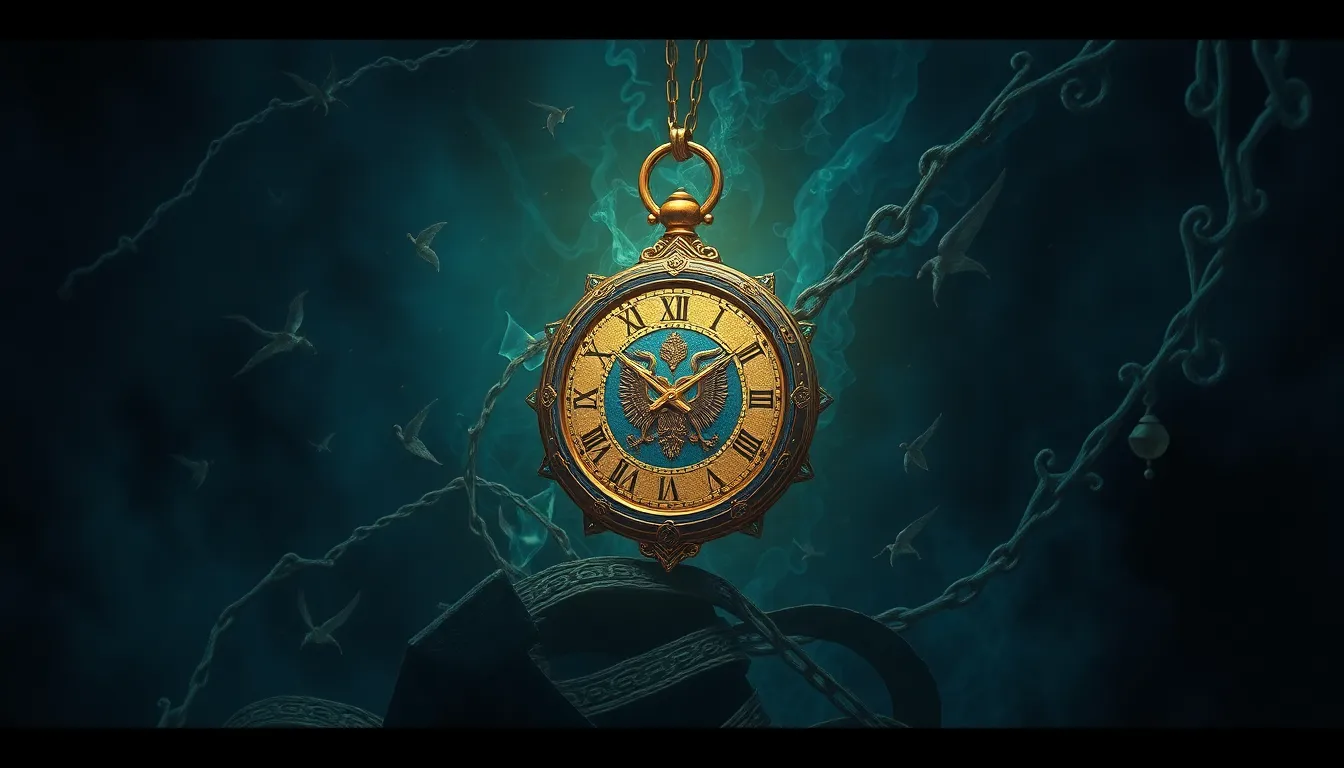The Amulet of Time: Myths of Past and Future
Introduction: The Allure of Time Travel
Time travel has captivated the human imagination for centuries, weaving its way through mythology, literature, and popular culture. Defined as the ability to move between different points in time, this concept raises profound questions about existence, fate, and the nature of reality. Among these intriguing ideas is the notion of the Amulet of Time, a mythical object said to grant its wielder the power to manipulate time, whether to revisit the past or glimpse the future.
Historical Context: Time in Ancient Civilizations
To understand the concept of the Amulet of Time, one must first explore how ancient civilizations perceived time. In cultures such as the Egyptians, Mayans, and Greeks, time was not merely a linear progression but a cyclical phenomenon deeply intertwined with their cosmologies.
- Egyptians: Time was represented by the cycle of the sun, and they constructed massive monuments like the pyramids to align with celestial events.
- Mayans: Their intricate calendar systems reflected a profound understanding of time cycles, emphasizing the importance of astronomical events.
- Greeks: Philosophers like Heraclitus viewed time as an ever-flowing river, while others like Parmenides saw it as an illusion.
Timekeeping devices, such as sundials and water clocks, were not only practical tools but also held significant mythical representations, often symbolizing the divine order of the universe.
The Origins of the Amulet of Time: Myths and Legends
The Amulet of Time is steeped in a rich tapestry of myths and legends across various cultures. Many stories depict heroes or deities who possess the ability to traverse time, often leading to significant consequences.
Key figures associated with time manipulation include:
- Chronos: The personification of time in Greek mythology, often depicted as an old man with a long beard.
- Kali: In Hindu mythology, she represents the cyclical nature of time and its relentless passage.
- The Timekeeper: A figure in various folklore who maintains the balance of time and reality.
Cultural Interpretations of Time in Mythology
Different cultures interpret time through unique lenses, often influenced by their spiritual beliefs and societal structures. Eastern philosophies, such as Buddhism, perceive time as an illusion, emphasizing the present moment, while Western cultures often view it as a linear progression.
This divergence also manifests in the role of deities:
- Eastern Deities: Often embody time’s cyclical nature, teaching followers to embrace the present.
- Western Deities: Frequently associated with fate and destiny, highlighting a more deterministic view of time.
The Symbolism of the Amulet in Various Cultures
The Amulet of Time is not merely a physical object; it carries deep symbolic meanings across cultures. Its attributes often include:
- Power: The ability to change one’s fate or alter past mistakes.
- Eternity: A reminder of the cyclical nature of existence and the perpetual flow of time.
- Change: A symbol of transformation and the impermanence of all things.
Time Travel in Literature and Folklore
The concept of the Amulet of Time and time travel has inspired countless literary works and folklore. From H.G. Wells’ “The Time Machine” to the modern “Harry Potter” series, the theme of manipulating time resonates profoundly with readers.
Folklore also plays a significant role in shaping contemporary perceptions of time travel, often depicting magical objects or beings that facilitate journeys through time. These narratives reflect humanity’s desire to confront the past or explore potential futures.
The Science of Time: Bridging Myth and Reality
While myths of time travel captivate our imagination, scientific theories also provide intriguing frameworks for understanding time. Concepts from general relativity and quantum mechanics suggest that time may not be as linear as it appears.
Key scientific theories include:
- General Relativity: Proposes that time is relative and can be affected by gravity and velocity.
- Quantum Mechanics: Introduces the idea of multiple timelines and the uncertainty of time itself.
These theories echo certain mythical concepts, suggesting that time may be more fluid than previously understood.
Modern Adaptations: The Amulet of Time in Pop Culture
The Amulet of Time has found its way into modern pop culture, appearing in movies, books, and video games. From “Back to the Future” to “Doctor Who,” these adaptations explore the complexities and consequences of time travel.
These representations influence contemporary beliefs about time, often romanticizing the idea of revisiting the past or altering future outcomes, while also cautioning against the dangers of such powers.
Philosophical Implications: What Does Time Mean to Us?
The concept of time travel raises profound philosophical questions. What does it mean to change the past? How does our understanding of time influence our actions and decisions?
Key philosophical implications include:
- The nature of free will versus determinism.
- The ethical considerations of altering historical events.
- The impact of time on identity and memory.
Conclusion: The Enduring Fascination with Time
The Amulet of Time, with its rich tapestry of myths and cultural interpretations, continues to captivate our imagination. From ancient civilizations to modern science fiction, the allure of time travel speaks to our deepest desires to understand our past, navigate our present, and envision our future.
As we move forward in a world increasingly defined by our relationship with time, the narratives surrounding the Amulet of Time remain relevant, reminding us of the eternal quest to comprehend the mysteries of existence.



